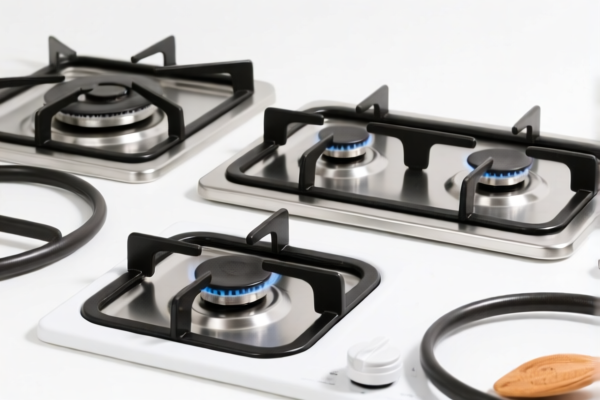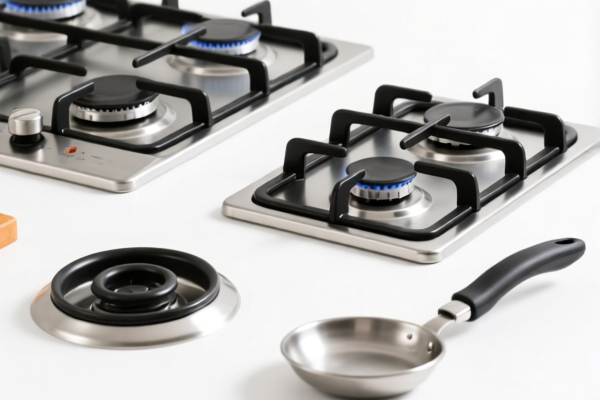| HS Code | Official Doc | Tariff Rate | Origin | Destination | Effective Date |
|---|---|---|---|---|---|
| 8415820170 | Doc | 57.2% | CN | US | 2025-05-12 |
| 8415830090 | Doc | 56.4% | CN | US | 2025-05-12 |
| 8479600000 | Doc | 57.8% | CN | US | 2025-05-12 |
| 8543706000 | Doc | 55.0% | CN | US | 2025-05-12 |
| 8543906800 | Doc | 55.0% | CN | US | 2025-05-12 |
| 8504320000 | Doc | 57.4% | CN | US | 2025-05-12 |
| 8504909690 | Doc | 55.0% | CN | US | 2025-05-12 |
| 3926903000 | Doc | 59.2% | CN | US | 2025-05-12 |
| 3926909989 | Doc | 42.8% | CN | US | 2025-05-12 |
| 3925900000 | Doc | 60.3% | CN | US | 2025-05-12 |
| 3925100000 | Doc | 61.3% | CN | US | 2025-05-12 |




Air Conditioning Outlet
An air conditioning outlet, also known as a register or diffuser, is a component of an air conditioning system responsible for distributing conditioned air into a room or space. It is the visible point where cooled (or heated) air enters the occupied area.
Material
Outlets are commonly constructed from the following materials:
- Plastic: Lightweight, inexpensive, and available in various colors. Often used in residential applications.
- Metal (Aluminum, Steel): More durable than plastic, offering greater longevity and a more refined appearance. Frequently found in commercial settings.
- Wood: Primarily used for aesthetic purposes, often found in high-end residential designs to blend with décor.
Purpose
The primary purpose of an air conditioning outlet is to:
- Distribute Airflow: Evenly spread conditioned air throughout a room to maintain a consistent temperature.
- Control Direction: Allow users to adjust the direction of airflow, optimizing comfort and efficiency.
- Regulate Volume: Many outlets feature adjustable louvers or dampers to control the amount of air entering a space.
- Filter Intake (some models): Certain outlets incorporate filters to remove dust, pollen, and other airborne particles.
Function
Air conditioning outlets function by:
- Receiving Airflow: Connecting to ductwork that delivers conditioned air from the central air conditioning unit.
- Diffusing Air: Spreading the airflow in a wide pattern to avoid concentrated drafts.
- Adjusting Louvers: Louvers, manually or automatically controlled, redirect airflow horizontally, vertically, or in a specific pattern.
- Mixing Air: Some designs promote mixing of supply air with room air to improve temperature uniformity.
Usage Scenarios
Air conditioning outlets are used in:
- Residential Buildings: Homes, apartments, and condominiums.
- Commercial Buildings: Offices, retail spaces, and restaurants.
- Industrial Facilities: Factories, warehouses, and manufacturing plants.
- Vehicles: Cars, buses, and trains.
Common Types
- Standard Registers: Simple outlets with adjustable louvers for directional control.
- Diffusers: Designed for wider airflow distribution, often used in ceilings. Can be square, round, or linear.
- Linear Diffusers: Long, narrow outlets commonly used in commercial spaces for a streamlined appearance.
- Ceiling Registers: Installed in ceilings to distribute air downwards.
- Floor Registers: Located on the floor, often used for perimeter heating or cooling.
- Smart Registers: Electronically controlled outlets that can be adjusted remotely or programmed for automated temperature control. These often include features like zone control and energy monitoring.
- Return Air Grilles: While not supplying air, these are often visually similar and used to draw air back into the air conditioning system for recirculation and cooling.
Based on the provided information, “air conditioning outlet” can be classified under several HS codes, depending on its specific characteristics and function. Here's a breakdown of potential classifications:
-
8415820170: This code covers “Other air conditioning machines incorporating a refrigerating unit”. If the outlet is an integral part of a complete air conditioning machine with a refrigerating unit, this is a relevant classification. The total tax rate is 57.2%, comprising a basic tariff of 2.2% and an additional tariff of 25.0%, increasing to 30.0% after April 2, 2025.
-
8415830090: This code applies to “Air conditioning machines, comprising a motor-driven fan and elements for changing the temperature and humidity, including those machines in which the humidity cannot be separately regulated; parts thereof: Other, except parts: Not incorporating a refrigerating unit Other air conditioning machines not incorporating a refrigerating unit”. If the outlet is part of an air conditioning machine without a refrigerating unit, this code is applicable. The total tax rate is 56.4%, consisting of a basic tariff of 1.4% and an additional tariff of 25.0%, rising to 30.0% after April 2, 2025.
-
8479600000: This code covers “Machines and mechanical appliances having individual functions, not specified or included elsewhere in this chapter; parts thereof: Evaporative air coolers”. If the outlet is specifically designed for an evaporative air cooler, this code may be appropriate. The total tax rate is 57.8%, with a basic tariff of 2.8% and an additional tariff of 25.0%, increasing to 30.0% after April 2, 2025.
-
3926903000: This code covers “Other articles of plastics and articles of other materials of headings 3901 to 3914: Other: Parts for yachts or pleasure boats of heading 8903; parts of canoes, racing shells, pneumatic craft and pleasure boats which are not of a type designed to be principally used with motors or sails”. If the outlet is made of plastic or other materials (3901-3914) and is a part for yachts or pleasure boats, this code applies. The total tax rate is 59.2%, comprising a basic tariff of 4.2% and an additional tariff of 25.0%, increasing to 30.0% after April 2, 2025.
-
3926909989: This code covers “Other articles of plastics and articles of other materials of headings 3901 to 3914: Other: Other”. If the outlet is made of plastic or other materials (3901-3914) and doesn't fall into other specific categories, this code may be used. The total tax rate is 42.8%, with a basic tariff of 5.3% and an additional tariff of 7.5%, increasing to 30.0% after April 2, 2025.
-
3925900000: This code covers “Builders' ware of plastics, not elsewhere specified or included: Other”. If the outlet is made of plastic and is considered builders' ware not specifically classified elsewhere, this code may be applicable. The total tax rate is 60.3%, with a basic tariff of 5.3% and an additional tariff of 25.0%, increasing to 30.0% after April 2, 2025.
-
3925100000: This code covers “Builders' ware of plastics, not elsewhere specified or included: Reservoirs, tanks, vats and similar containers, of a capacity exceeding 300 liters (If the outlet functions as a large air distribution component resembling a container)”. If the outlet is made of plastic, functions as a large air distribution component resembling a container, and has a capacity exceeding 300 liters, this code may be used. The total tax rate is 61.3%, with a basic tariff of 6.3% and an additional tariff of 25.0%, increasing to 30.0% after April 2, 2025.
It is important to determine the material composition and precise function of the “air conditioning outlet” to select the most accurate HS code.
Customer Reviews
No reviews yet.